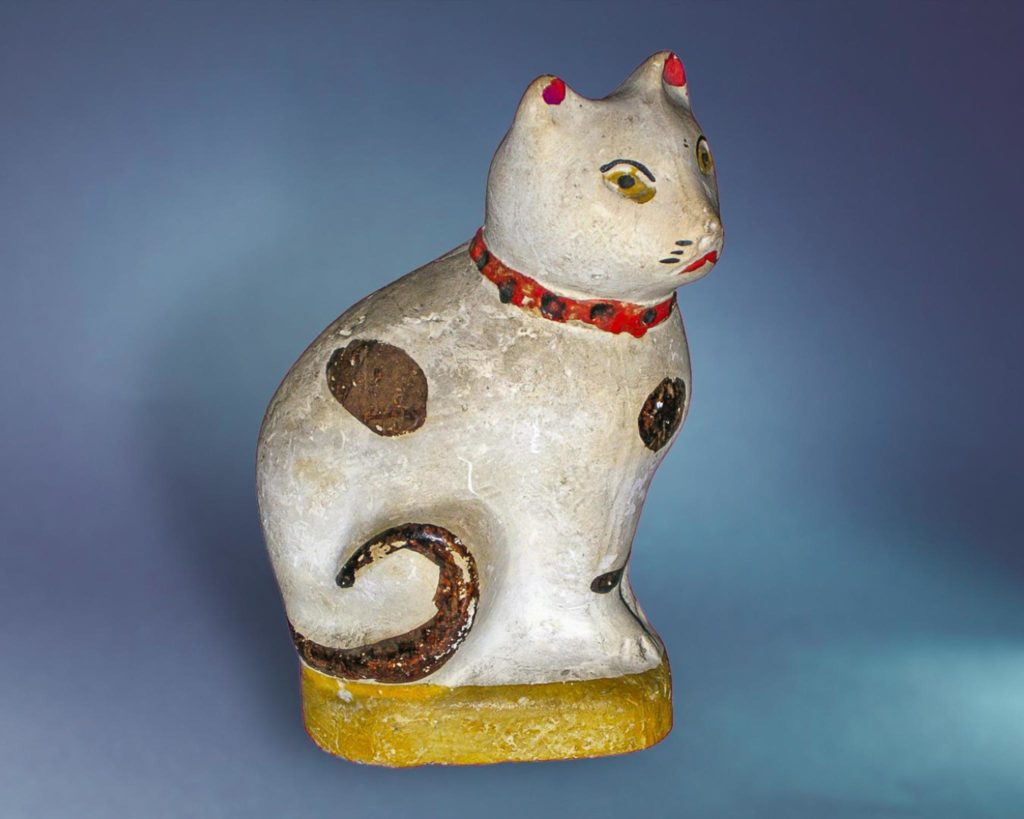
By Jeni Jackson
Assistant manager, tour programs
I am the resident cat lady. I’ve always had cats, and whenever a cat was spotted on the property, Public Safety would call me, so I got involved with a local cat rescue. I was on one of my many wanders through the museum when I first started 20 years ago, and I was drawn to a cabinet with these chalkware figures. There’s a whole assortment of animals, and they’re all unique and charming in their own ways. I’ve always been drawn to them in general because they have little eyebrows, and any time you put eyebrows on an animal, that just cracks me up. But once I spotted that cat, it was the one. It is so beautifully painted. We don’t know exactly when it was made or where. It’s very generic that way, so it’s like an Everyman’s craft. As a cheap alternative to ceramics, chalkware was an option for the more creative. Made from plaster of Paris, figures could be made at home in any style or shape, using a homemade mold. Early chalkware pieces can be hollow or solid, painted with watercolors, oils, or even tempera. This one is adorable. I’m not normally on the eighth floor to do tours anymore, but I do walk through the museum once or twice a week, and I make a point of stopping up to see all the little chalkware figures, especially my kitty.
Cat figure
England, France, or United States (East Coast), 1850-1900
Bequest of Henry Francis du Pont 1964.1672
Plaster (chalkware)